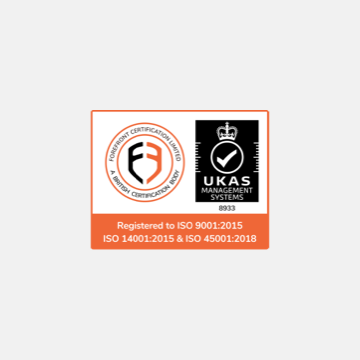
Aerial Drone Survey
Aerial Drone Surveys are an invaluable tool in the acquisition of survey data for difficult to reach areas and expansive terrains, providing a solution that markedly improves efficiency compared to conventional survey methodologies. Our approach combines the collection of digital photographs and lidar point clouds from the drone with accurate coordination of ground control points using the fundamental principles of control survey and photogrammetry. The resulting data can be used to construct quality deliverables such as digital terrain models (DTMs) and topographical surveys.
See below for more detail on our services.
UAV Services
- Aerial Mapping and Photogrammetry: Generate 2D maps and 3D models of your project site for precise analysis and decision-making such as stockpile analysis for cut and fill calculations.
- Topographical Surveys: Obtain detailed elevation data and terrain models to support engineering and construction projects.
- Building survey: Get data on those inaccessible roofs and elevations.
- Asset Inspections: Monitor the condition of infrastructure, pipelines, power lines, and more with regular aerial inspections, identifying issues before they escalate.
- Crop Monitoring: Optimise agricultural practices with aerial imagery and data analytics, allowing for targeted interventions and improved yields.
- Environmental Monitoring: Assess environmental impact, track changes in vegetation, monitor wildlife habitats, and more with UAV-based surveys.
Get in touch to discuss your aerial drone survey needs. MJ Rees has its own in-house qualified drone pilots that are licensed and certified by the Civil Aviation Authority (CAA).
Frequently Asked Questions
What is a drone survey?
A drone survey is a method of using unmanned aerial vehicles (UAVs), commonly known as drones, to collect data for surveying purposes. These surveys are often used in industries such as:
- Construction sites
- Agriculture
- Mining
- Real estate
- Environmental monitoring
- Solar farms
- Urban planning
- Security industry
- Search and rescue operations
- Inspections
- Topographical survey
- Films
- Photography
- Volume measurements
- Waste management
For a typical drone survey, the drone is equipped with high-resolution cameras, GPS, LiDAR (Light Detection and Ranging), or other sensors to capture imagery, topography, or 3D models of the land or property. The data collected from the drone is then processed using specialised software to create maps, models, or analyse terrain features.
What are the advantages of drone land surveying?
A drone can take hundreds of images as it moves. This data can then be fed into a piece of software to stitch and layer the images to create both 2D or 3D models. It could take days or weeks to undertake a survey from start to finish using traditional methods. However, drones now make it possible for surveyors to create models with precision, at a fast rate. Advantages include:
- Minimised Human Error
- Cost-Effective: reduced labour costs, no need for heavy equipment
- Faster Data Collection
- Access to Hard-to-Reach Areas
- High Accuracy: centimetre-level
- Minimal Environmental Disruption
- High-Resolution Imagery and Data
In what circumstances would you commission an aerial drone survey?
You might be wondering if a drone is better than those traditional methods. There are many ways that they are more beneficial. These drones can acquire data at vantage points that are not accessible to humans, especially those areas with challenging terrains. There is no need for human operators to measure points in hazardous locations physically. When a drone flies over an area, it can capture the same amount of data in a shorter time frame. If you are looking for a more efficient way to survey those areas, it might be time to consider using a drone survey. Examples of locations and job requirements where you might consider using a drone include:
Large areas for planning purposes.
- Stockpiles and quarry’s where heavy machinery operates. Volume calculations.
- Construction sites, project management: check progress of the project and amend tasks if needed to maintain project on track
- Nuclear sites for monitoring security.
- Manufacturing environments inventory checks and asset monitoring.
How accurate is a drone survey?
Firsly, drone surveys require professional, qualified operators. When you work with a chartered surveying company, you can expect quality results.
If you are concerned about the accuracy of a drone survey, you should discuss this directly with the professionals you have chosen to work with.
In general, and from our experience, using Ground Control Points and an RTK module mounted on the drone we are getting tolerance errors from ±10mm to ±30mm, but the accuracy of a drone survey is dependent on several factors including:
- Ground Control Points – see further information below.
- the amount of overlap between photos
- the flight speed
- the flight altitude
- the resolution of the camera
- camera angle
- the type of lens used
- environmental conditions
- time of the day
- The feature/s you are trying to survey
Ground Control Points (GCP)
- GCP are used as reference points to establish an accurate position of photogrammetric or LiDAR data to a coordinate system you’re working in.
- Ground Control Points will help deliver as accurate an aerial map as possible. These points are important to surveyors because they are set with absolute accuracy. This means that a point correlates to a true value, such as a GPS coordinate. If you conduct a drone survey and you need to achieve a high accurate positioning result, there is no work around, you must use GCPs.
When installing the points there are factors of consideration.
- Ensure you have enough to cover your survey area
- Make sure they are secure and cannot be easily moved.
- They must be visible from the air so you can find them on your aerial photos.
Once installed you are ready to survey their positions. Using survey grade GPS (in our case, a Trimble R10 GNSS receiver and network VRS) points are observed with 2 sets of 3-minutes GPS occupations, with each of those occupations separated by at least 20 minutes.
The coordinates are then post-processed and used to ensure a correctly positioned drone survey with accurate, reliable level information.
What deliverable are available from drone surveys?
A drone can achieve several types of deliverables:
- Pictures format: JPG, JPEG, PNG
- 2D Orthomosaic Maps in TIFF/GEOTIFF/KML/JPEG formats,
- 3D Orthomosaic Maps in TIFF/GEOTIFF/KML/JPEG formats,
- Multispectral Map in TIFF/GEOTIFF/KML/JPEG formats,
- 3D Models
- Point Cloud in the following formats: LAS, LAZ, POD, PLY or OPC.
- Production meshes in 3MX/3SM/DGN/I3S/OBJ/FBX/STL/DAE/OSGB/Cesium formats.
- Videos formats: MP4, MOV.












